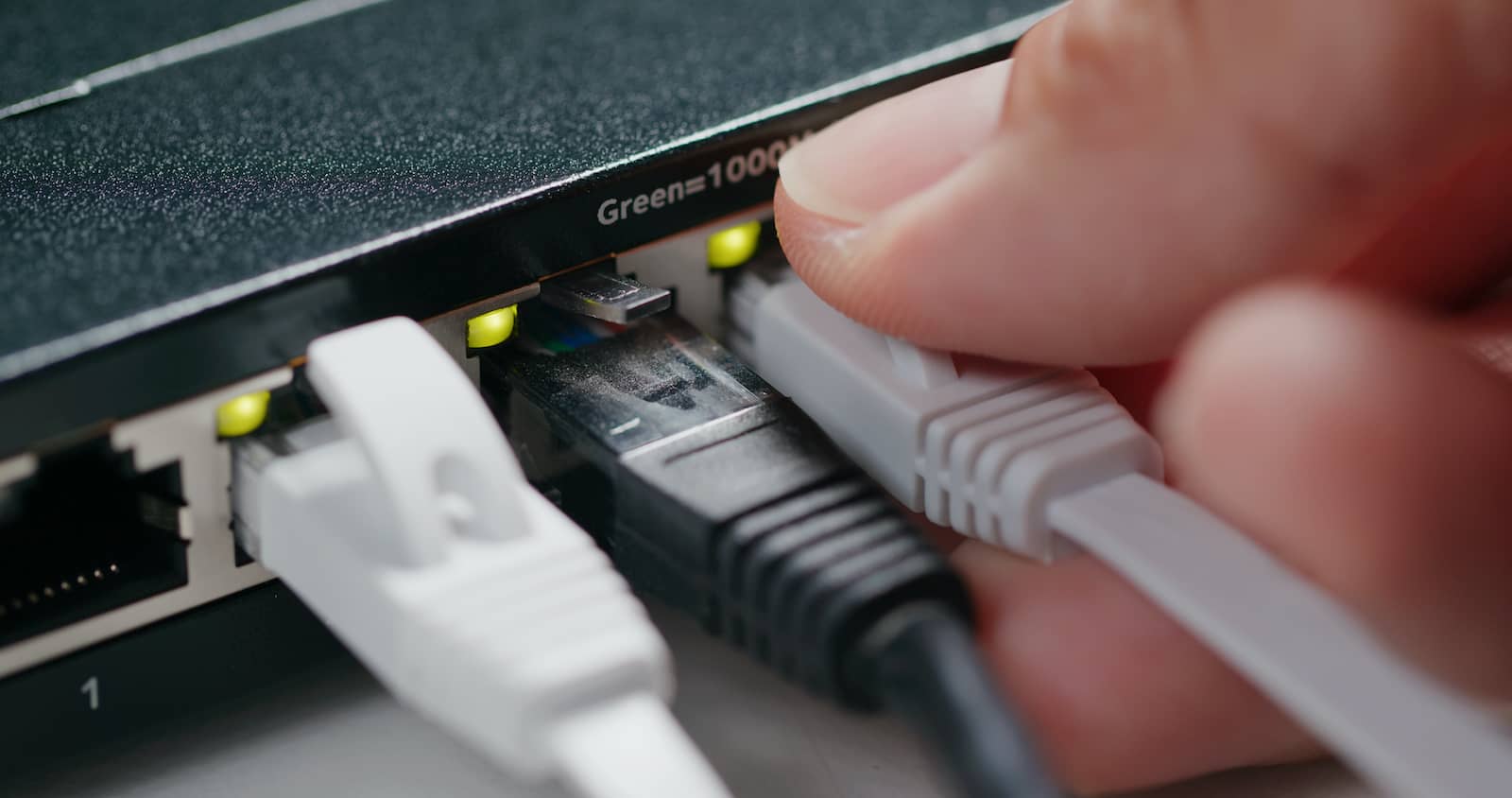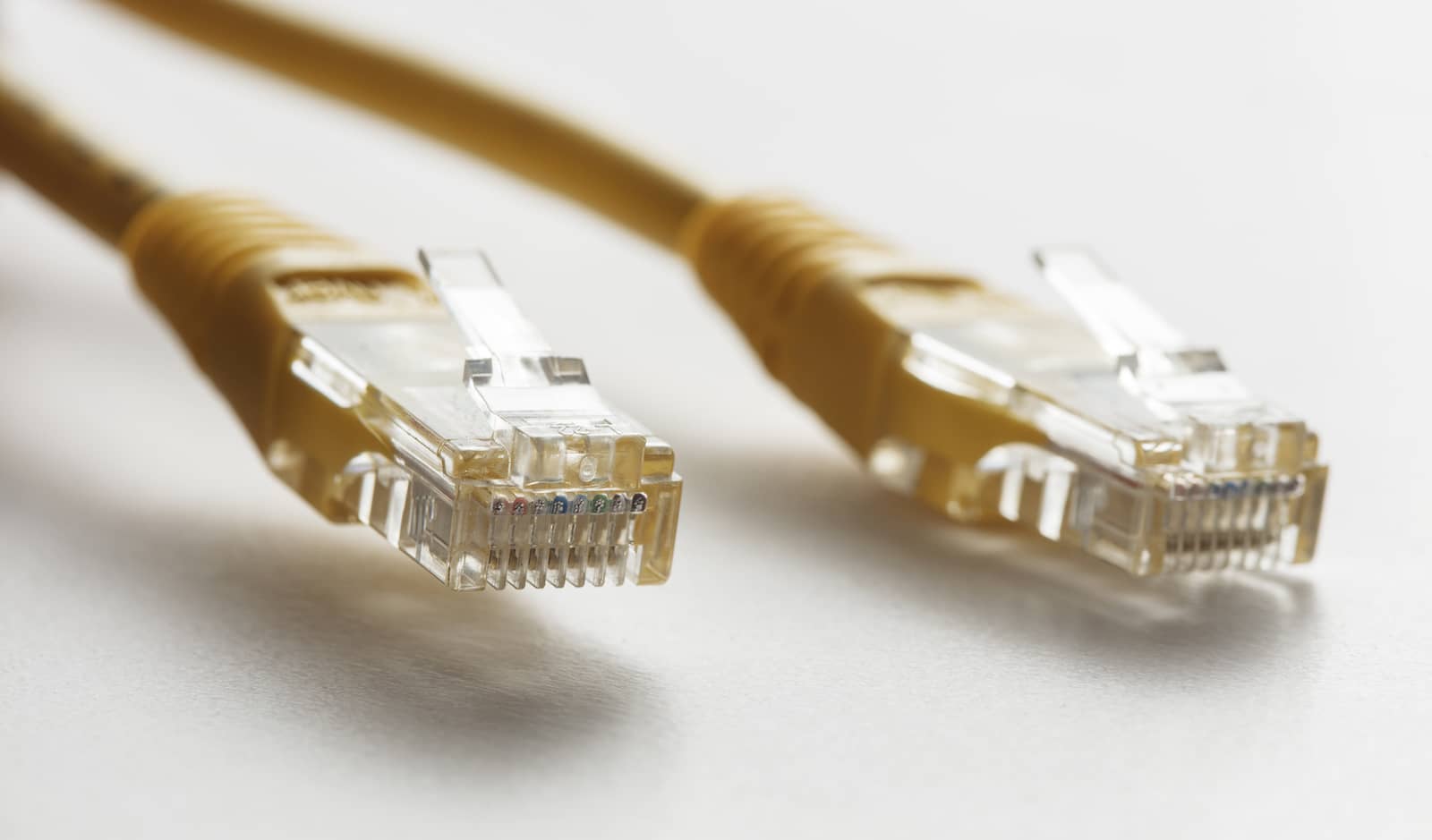Telecommunication Systems in the Railway Industry
Communications networks have become essential for modern railroad operations. Railroad systems rely on these networks to help trains run on time and with maximum security, all while passengers can enjoy their journey and freight trains speed to their final destination. As a result, finding the right communications systems in the railway industry has become a vital part of planning and operations.
The breadth of these applications ranges widely. Advanced computer equipment is needed to develop by-directional communication, helping with complex systems like wayside signaling, video surveillance, traffic management, and more. None of that is possible without a large and reliable network that can collect and transmit data back to the control center.
Creating these telecom systems requires the best possible equipment, made to be both immensely durable and able to transmit large amounts of data. The equipment provided by Planet USA, from Ethernet switches and extenders to splitters, can all play a significant part in helping to ensure smooth train operation on all levels.
At its core, building these networks requires a central understanding of telecommunications in the railway industry. That includes the dangers of an inferior telecom system, along with the types of technology that can make the planning and execution of these systems both sustainable and efficient.

Telecommunications’ Importance in the Railway Industry
During the past few decades, the railroad industry has undergone a massive digital transformation. Communication has become increasingly important in all aspects of train operations.
Passengers are demanding smooth and on-time rides along with an exceptional guest experience that includes cell phone reception and wireless internet. But even more importantly, railway systems now require communications at almost every level.
Wayside signaling systems have to travel through wireless communication waves, as do early alarm systems for potential issues on the track. Video surveillance on trains and train stations is increasingly centrally managed and available to remote stakeholders. Trains transmit signals that allow more centralized traffic management. Ticketing and citations are increasingly centralized as well.
And that’s before even getting into the mass of voice, video, and data traffic that has to pass through and out of every train from both passengers and train operators. Combine it all, and according to ASMag, industry experts agree that it has become almost impossible to maintain a modern rail system without a robust, up-to-date communications network.
This need will only continue to increase and rise in importance in the near future. Already, the internet of things (IoT) has arrived in the railway industry. Smart sensors allow for the automation and analysis of large swaths of data, designed to increase the safety of passengers and build more efficient operations.
Consider the case for predictive maintenance, which monitors railroad equipment in real-time. It takes constant reporting to allow stakeholders to understand when the equipment needs maintenance before a breakdown. In turn, maintenance can become more strategic, leading to fewer delays, lower costs, and a more efficient operation.
But of course, none of that is possible without robust comms systems. Quite the opposite, in fact. The dangers of not prioritizing telecommunications in the railway industry can be significant.
The Consequences of an Inferior Telecommunications System
What happens if railway systems fail to implement and operationalize strong telecom solutions? As you might imagine, the consequences can become significant. Consider these scenarios in which communications systems need to play a core role:
- A passenger medical emergency. Reliable communications become essential to get medical attention in a timely fashion, both in and between individual stations.
- Defective station equipment. What happens if the passenger gates shut down or ticketing machines can no longer print tickets? The right system can both alert stakeholders about the situation and provide temporary solutions, like an online system.
- Potential security incidents. In case of an emergency like a human threat or a fire, railway systems need to quickly and efficiently communicate evacuation procedures, station closures, or train shutdowns to all stakeholders, from passengers to local law enforcement.
- Car switching (shunting) operations. Especially in cargo trains, effective shunting is essential to keep tight schedules and delivery deadlines. Effective and reliable communication is essential to get the right cars to the right place at the right time.
- Equipment repairs and replacements. When a crucial piece of railway equipment fails, how quickly can maintenance teams be notified and arrive to take care of them? How efficiently can passengers be informed about potential delays or changes in train schedules?
Imagine the consequences if the communications system happens to fail during any one of these situations. Outdated or unreliable technology can be devastating for everyone involved, from passengers to railway operators. Safety and security are now at risk, even in everyday situations that should otherwise not be stressful for the involved parties.

The Importance of Durability in Railway Industry Telecom Systems
Durability is paramount in the railway industry. The average train lasts more than 30 years before it goes out of service, which is far longer than most equipment requiring communications systems in other industries.
As a result, retrofitting is a common practice to make sure that communications technology stays updated. New trains, like the above-mentioned IoT capabilities, certainly more easily adapt to new technology. But in a few years, they will again be outdated if the equipment installed isn’t durable and robust enough for its environment.
A few aspects of modern train operations are especially core to exploring the importance of robust telecommunications in the railway industry:
- Communications-based train control (CBTC). This system manages both railway traffic and infrastructure through direct communications between the train and the track. It automates aspects like ticketing and signaling, reducing the potential and inefficiencies of human error. Of course, it can only function when its communications network is reliable.
- Railway surveillance systems. Modern systems monitor not just individual trains, but the entire track infrastructure. They can alert operators of obstacles on the track, potential collisions, and much more. But that data needs to be transmitted quickly and reliably, providing vital information to prevent potentially devastating consequences in real-time.
- Daily staff and stakeholder communications. Everyone involved in the operation of a railway, from train operators and dispatchers to maintenance staff and security personnel, needs to communicate instantly and constantly. Breakdowns, public safety incidents, and even routine check-ins all require a reliable, robust, trustworthy network that responds at a moment’s notice.
- The Internet of Things (IoT). While it has already transformed many other industries, IoT is only getting started in the telecommunications railway industry. Many of the systems above can be automated more efficiently, with crucial data gathered for more actionable analysis that leads to more efficient operations. But IoT-enabled operations require massive amounts of data exchange that are impossible without reliable and robust communications networks.
The nature of most railway networks means that strategic leaders don’t always have the luxury of waiting for an entire fleet replacement to make the switch to new systems. Instead, the equipment installed needs to be both durable and flexible, able to both install easily in new trains and tracks and integrate into existing systems.

Ethernet Switches
At its core, an Ethernet switch is a piece of equipment that can distribute a single internet connection to a broader network of connected devices. Its purpose is to create a local area network (LAN) among all these devices that enable them to access the internet.
Devices typically connected to each other and the internet through an Ethernet switch include computers, servers, and internet of things equipment. However, switches can also connect to Wi-Fi access points, which in turn connect to mobile devices that can now access the same network and internet connection.
Ethernet switches build their LAN based on Ethernet technology, which are physical cables that can manage the two-way flow of data between multiple devices and applications. These cables are the foundational technology of any networking today.
Think of Ethernet switches as junctions, distributing the network and communications traffic across a larger system. A central system spreads into many individual LANs in individual trains or stations. As such, this simple piece of equipment has become a crucial part of the larger equation for telecommunications in railway systems.
Railway systems, of course, cannot always or only rely on physical cabled connections for their communications systems. That’s where Wi-Fi becomes a crucial technology. Ethernet-connected Wi-Fi access points create wireless network extensions on individual trains, stations, and even railroad cars.
10 Things to Consider When Choosing an Ethernet Switch for Railway Applications
Thanks to their simple but important role, finding the right Ethernet switch becomes a crucial part of building a railway communications network. These 10 considerations can help to find the right equipment for track-to-train networks, digital displays, Wi-Fi systems, and more.
- Maximizing speed and bandwidth. Data needs for both operations and passengers have risen dramatically and will only continue to rise in the future. As a result, switches need to handle both fast transmission speed and significant data bandwidth. Look for products that can support 10 GB Ethernet (10GbE), which can manage 10 GB of data per second.
- Creating multiple high-speed access points. High-capacity Ethernet switches can support up to 20 individual connections, but not all of them will have the same capacity. Not all connections to the switch may need 10GbE capacity. But the more ports on the switch can support that high level of speed and bandwidth, the more prepared for the future your network will be.
- The Power of PoE Opportunities. Power over Ethernet (PoE) is the ability to run electric currents through your Ethernet connections in addition to data. This, in turn, can significantly reduce the cost and maintenance required. Switches that support PoE should support at least 30W of power, connecting both current and future devices in the railway system.
- Integrated DC-DC buck-boost converter. Even when running with a PoE setup, switches can differ in whether or not additional equipment is necessary to supply sufficient power to connected devices. An integrated DC-DC buck booster can handle variable voltage outputs, making switches that house it more flexible in terms of the devices connected and powered by it.
- Certified switches to suit your application. Different types of Ethernet switches are built for very different applications and environments. It’s crucial to focus on switches that are internationally certified to match your intended application. For the railroad industry, look for international certificates EN50115, EN50121, and EN45545 to ensure quality in the right context.
- Going for high-end quality. The long-term nature of telecommunications in the railway industry makes future-proofing crucial when finding the right equipment. Look for specifications that are easily upgradable and estimated to be top-of-line for years into the future. For example, switches with Layer 2 plus management function can be upgraded to Layer 3 at a future point, making them valuable for longer timeframes.
- Real-time monitoring becomes essential. Railway network systems are comprehensive. Maintenance teams often need to check the status of hardware to manage or prevent failures. That, in turn, means prioritizing switches that provide long-term monitoring can pay off quite well. Operating temperature, power current, CPU load, and more should be easily accessible and readable.
- Flexibility in operating temperature. Railway systems cannot operate within a single, defined temperature. The same piece of equipment may be exposed to exterior temperatures ranging anywhere from -40°F to +167°F. The switches selected for the larger systems need to support these temperatures while remaining stable and reliable without the risk of overheating or cooling.
- Protection against natural disasters. Lightning strikes can happen at any time. Electrical storms can cause voltage spikes. Switches that are unprepared for these occurrences can risk every device on the network getting fried by these spikes. As a result, proper galvanic isolation is absolutely crucial. Advanced switches for railway operations can also reduce inrush currents to further minimize damage.
- Systematic firmware updates. Equipment like Ethernet switches requires continuous updates to the most recent firmware. Outdated firmware may cause exposure to cybersecurity threats. Look for equipment that supports a PXE environment, which allows for a more systematic approach to updating firmware across the entire railway system.
Finding Ethernet switches that support these requirements and considerations is not easy. But it’s still a crucial step to ensure long-term viability, stability, and security. Use it as a checklist to ensure high-quality equipment within and around the railroad for years to come.

Ethernet Extenders
An Ethernet extender is a device designed to extend a local area network beyond its natural limitation in distance. Most network operators use one of four devices to extend their Ethernet: a modem, a router, or a DSLAM concentrator.
The typical network limitation for a LAN created by an Ethernet switch is 328 feet (100 meters). Any devices beyond that range will experience losses in data transfer reliability and speed. The right Ethernet extender can multiply that range, even going up to five miles or more depending on the equipment used:
- A modem can capture wave signals to send digital data to individual devices, allowing them to extend the network by sending data to one another.
- A router forwards data packets between computer networks, directing the traffic of data to connect multiple networks and effectively extending the range of the system in the process.
- A DSLAM concentrator functions as a multiplexer, collecting data from its modern port to create a single complex signal for end devices on the network.
Ethernet extenders also use a variety of wire and cabling types to extend the network range. For example, a comprehensive system using twisted wires and VDSL technology can reach up to five miles at 128 kbps. That range is limited to 1000 feet if higher data transfer speeds of up to 100 Mbps are necessary.
Naturally, Ethernet extenders have become a crucial piece of building effective telecommunications systems in the railway industry. They allow both the extension and the expansion of individual networks. In the process, they solve the unique industry needs for complexity, which calls for wide swaths of data exchanges in a wide range of settings.
Ethernet Splitters
Ethernet splitters are devices that allow for multiple network connections to run through a single bottleneck cable at some point in the connection. However, Ethernet splitters cannot provide a network connection to two devices from a single output port. Instead, they can take two output ports, combine them into a single cable, and then split that cable back into two inputs for two separate devices.
As a result, splitters cannot create a network connection for more devices than initial outputs. They’re specifically designed to put two connections through a single Ethernet cable at any point in the data distribution. Crucially, the limit is always two. A single splitter cannot move from more than two Ethernet outputs into a single Ethernet cable.
Splitters are beneficial when simplicity is necessary. If at any point the network benefits from multiple outputs being reduced to a single cable, a splitter can help. In a residential application, for example, two outputs from the internet router can lead to a single Ethernet cord going through the wall to connect two devices to the internet at the same time.
In the railway industry, Ethernet splitters have similar potential applications. They can prevent bottlenecks from becoming problems. For example, the limited space in railway cars may allow fewer Ethernet cables to be distributed than the connections required. Splitters can ensure that the connections still all receive the data they need to build the telecoms network.
The Difference Between an Ethernet Splitter and an Ethernet Switch
Ethernet splitters and Ethernet switches are fundamentally different. The first can avoid bottlenecks in the physical cabling process. The second can create a network with multiple outputs for individual devices derived from a single connection.
That fundamental difference, in turn, leads to a few other complexities to consider when understanding the applications of the two devices:
- Ethernet switches are complex devices that require their own power supply.
- Ethernet switches also need to be set up and maintained properly. If they go down or security becomes compromised, the entire network is compromised.
- Ethernet splitters are simple devices that can be attached to any existing network.
- Ethernet splitters can only hold two devices at any one point, while switches can support as many as they have outputs — up to 20 in some cases.
Put differently, both of these devices have their place in creating networks within the railway industry. Switches act as the fundamental building blocks of the network, while splitters have a smaller role in avoiding cabling bottlenecks. Combined, they can help to build a more strategic telecommunications setup for individual trains and larger systems.

Conclusion
Finding the right technology for a larger railway infrastructure is only possible when working with the right equipment partner. The right partner will not just deliver high-quality products but also help to select what those products might be based on specific scenarios and environments. Strong product support is another must in that area.
Enter Versa Technology. We have developed an expansive product portfolio to support a variety of networking applications in a diverse range of networking environments.
For us, that means a large staff specifically equipped to manage regular cargo and air shipments that require distribution globally. Timely order fulfillment is pivotal, but so are competitive rates and high-quality customer support via multiple channels. Our setup allows you to build better telecommunications systems in the railway industry, setting yourself up for success for years to come. Contact Versa Technology for more information.
